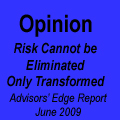There was another jump in yields today:
Financial markets have upped their bets on additional rate hikes from the Bank of Canada and U.S. Federal Reserve following blowout employment reports in both countries and higher-than-expected inflation data from the United States.
This amounts to a U-turn for bond traders and investors, who spent much of January and early February doubting the resolve of central bankers in both countries to keep interest rates at highly restrictive levels through 2023.
Interest rate swaps, which capture market expectations about future rate decisions, have gone from pricing in two rate cuts by the Bank of Canada before the end of the year, to pricing in another rate hike in July and no rate cuts until 2024. That would bring the bank’s benchmark rate to 4.75 per cent.
In the U.S., markets now see the Fed increasing its benchmark interest rate to a peak of 5.25 per cent by July, a quarter-point higher than expected two weeks ago.
But people are still buying things:
The S&P 500 ended higher on Wednesday after stronger-than-expected retail sales data offered evidence of resilience in the U.S. economy, but gains were capped as investors worried about more interest rate hikes by Federal Reserve in the months ahead. Canada’s main stock index eked out marginal gains.
A Commerce Department report showed U.S. retail sales surged 3% in January as purchases of motor vehicles and other goods pushed the number well past the 1.8% estimate from economists polled by Reuters.
But not houses:
Canada’s housing downturn deepened further in January, with sales hitting their lowest level since the 2009 Great Recession and home prices declining for the 11th straight month.
The volume of home resales fell 3 per cent from December to January after removing seasonal influences. That was the lowest level for January in 14 years, according to the Canadian Real Estate Association. The home price index, which excludes sales of highly priced properties, fell to $714,700 in January, down 1.9 per cent from December. The index is 12.6 per cent lower than a year ago and 15 per cent below last February’s peak values.
More homeowners put their properties on the market, with new listings increasing 3.3 per cent last month. CREA said this could be the start of more activity heading into spring, which is traditionally the busiest period for home sales.
GOC-5 now stands at 3.45%.
PerpetualDiscounts now yield 6.05%, equivalent to 7.86% interest at the standard equivalency factor of 1.3x. Long corporates yielded 5.06% on 2023-2-10 and since then the closing price has changed from 15.03 to 14.82, a decline of 140bp in price, with a Duration of 12.32 (BMO doesn’t specify whether this is Macaulay or Modified Duration; I will assume Modified) which implies an increase in yield of about 11bp since 2/10 to 5.17%, so the pre-tax interest-equivalent spread (in this context, the “Seniority Spread”) has narrowed to about 270bp from the 285bp reported February 8.
| HIMIPref™ Preferred Indices These values reflect the December 2008 revision of the HIMIPref™ Indices Values are provisional and are finalized monthly |
|||||||
| Index | Mean Current Yield (at bid) |
Median YTW |
Median Average Trading Value |
Median Mod Dur (YTW) |
Issues | Day’s Perf. | Index Value |
| Ratchet | 0.00 % | 0.00 % | 0 | 0.00 | 0 | -0.4458 % | 2,575.6 |
| FixedFloater | 0.00 % | 0.00 % | 0 | 0.00 | 0 | -0.4458 % | 4,940.0 |
| Floater | 8.75 % | 8.91 % | 61,197 | 10.39 | 2 | -0.4458 % | 2,846.9 |
| OpRet | 0.00 % | 0.00 % | 0 | 0.00 | 0 | -0.3704 % | 3,419.6 |
| SplitShare | 4.92 % | 6.52 % | 57,926 | 2.76 | 7 | -0.3704 % | 4,083.7 |
| Interest-Bearing | 0.00 % | 0.00 % | 0 | 0.00 | 0 | -0.3704 % | 3,186.3 |
| Perpetual-Premium | 0.00 % | 0.00 % | 0 | 0.00 | 0 | -0.8941 % | 2,836.3 |
| Perpetual-Discount | 6.01 % | 6.05 % | 74,694 | 13.81 | 37 | -0.8941 % | 3,092.8 |
| FixedReset Disc | 5.29 % | 7.29 % | 88,294 | 12.27 | 59 | 0.1872 % | 2,304.7 |
| Insurance Straight | 5.88 % | 6.03 % | 93,064 | 13.78 | 20 | -0.9683 % | 3,053.2 |
| FloatingReset | 9.69 % | 10.16 % | 38,485 | 9.33 | 2 | 0.2498 % | 2,606.2 |
| FixedReset Prem | 6.33 % | 6.38 % | 195,702 | 4.02 | 2 | 0.1972 % | 2,396.1 |
| FixedReset Bank Non | 0.00 % | 0.00 % | 0 | 0.00 | 0 | 0.1872 % | 2,355.9 |
| FixedReset Ins Non | 5.21 % | 7.00 % | 48,621 | 12.50 | 14 | 0.6351 % | 2,475.8 |
| Performance Highlights | |||
| Issue | Index | Change | Notes |
| CU.PR.H | Perpetual-Discount | -9.18 % | YTW SCENARIO Maturity Type : Limit Maturity Maturity Date : 2053-02-15 Maturity Price : 20.57 Evaluated at bid price : 20.57 Bid-YTW : 6.41 % |
| BN.PF.C | Perpetual-Discount | -7.30 % | YTW SCENARIO Maturity Type : Limit Maturity Maturity Date : 2053-02-15 Maturity Price : 18.40 Evaluated at bid price : 18.40 Bid-YTW : 6.71 % |
| IFC.PR.F | Insurance Straight | -6.36 % | YTW SCENARIO Maturity Type : Limit Maturity Maturity Date : 2053-02-15 Maturity Price : 20.75 Evaluated at bid price : 20.75 Bid-YTW : 6.50 % |
| CU.PR.E | Perpetual-Discount | -3.39 % | YTW SCENARIO Maturity Type : Limit Maturity Maturity Date : 2053-02-15 Maturity Price : 20.21 Evaluated at bid price : 20.21 Bid-YTW : 6.09 % |
| BN.PR.N | Perpetual-Discount | -2.06 % | YTW SCENARIO Maturity Type : Limit Maturity Maturity Date : 2053-02-15 Maturity Price : 19.00 Evaluated at bid price : 19.00 Bid-YTW : 6.36 % |
| GWO.PR.P | Insurance Straight | -2.05 % | YTW SCENARIO Maturity Type : Limit Maturity Maturity Date : 2053-02-15 Maturity Price : 21.75 Evaluated at bid price : 22.00 Bid-YTW : 6.23 % |
| PVS.PR.K | SplitShare | -1.98 % | YTW SCENARIO Maturity Type : Hard Maturity Maturity Date : 2029-05-31 Maturity Price : 25.00 Evaluated at bid price : 22.25 Bid-YTW : 6.84 % |
| IFC.PR.K | Perpetual-Discount | -1.81 % | YTW SCENARIO Maturity Type : Limit Maturity Maturity Date : 2053-02-15 Maturity Price : 21.38 Evaluated at bid price : 21.70 Bid-YTW : 6.13 % |
| MFC.PR.K | FixedReset Ins Non | -1.67 % | YTW SCENARIO Maturity Type : Limit Maturity Maturity Date : 2053-02-15 Maturity Price : 19.40 Evaluated at bid price : 19.40 Bid-YTW : 7.22 % |
| CU.PR.G | Perpetual-Discount | -1.61 % | YTW SCENARIO Maturity Type : Limit Maturity Maturity Date : 2053-02-15 Maturity Price : 19.00 Evaluated at bid price : 19.00 Bid-YTW : 5.95 % |
| FTS.PR.F | Perpetual-Discount | -1.59 % | YTW SCENARIO Maturity Type : Limit Maturity Maturity Date : 2053-02-15 Maturity Price : 20.42 Evaluated at bid price : 20.42 Bid-YTW : 6.03 % |
| MFC.PR.C | Insurance Straight | -1.39 % | YTW SCENARIO Maturity Type : Limit Maturity Maturity Date : 2053-02-15 Maturity Price : 19.87 Evaluated at bid price : 19.87 Bid-YTW : 5.77 % |
| CU.PR.J | Perpetual-Discount | -1.33 % | YTW SCENARIO Maturity Type : Limit Maturity Maturity Date : 2053-02-15 Maturity Price : 19.96 Evaluated at bid price : 19.96 Bid-YTW : 5.98 % |
| GWO.PR.T | Insurance Straight | -1.32 % | YTW SCENARIO Maturity Type : Limit Maturity Maturity Date : 2053-02-15 Maturity Price : 21.64 Evaluated at bid price : 21.64 Bid-YTW : 6.05 % |
| FTS.PR.G | FixedReset Disc | 1.21 % | YTW SCENARIO Maturity Type : Limit Maturity Maturity Date : 2053-02-15 Maturity Price : 18.45 Evaluated at bid price : 18.45 Bid-YTW : 7.38 % |
| BN.PF.B | FixedReset Disc | 1.24 % | YTW SCENARIO Maturity Type : Limit Maturity Maturity Date : 2053-02-15 Maturity Price : 17.90 Evaluated at bid price : 17.90 Bid-YTW : 8.29 % |
| BIP.PR.E | FixedReset Disc | 2.22 % | YTW SCENARIO Maturity Type : Limit Maturity Maturity Date : 2053-02-15 Maturity Price : 22.27 Evaluated at bid price : 23.00 Bid-YTW : 6.95 % |
| MFC.PR.M | FixedReset Ins Non | 2.32 % | YTW SCENARIO Maturity Type : Limit Maturity Maturity Date : 2053-02-15 Maturity Price : 18.51 Evaluated at bid price : 18.51 Bid-YTW : 7.48 % |
| MFC.PR.L | FixedReset Ins Non | 2.87 % | YTW SCENARIO Maturity Type : Limit Maturity Maturity Date : 2053-02-15 Maturity Price : 17.93 Evaluated at bid price : 17.93 Bid-YTW : 7.56 % |
| MFC.PR.N | FixedReset Ins Non | 2.97 % | YTW SCENARIO Maturity Type : Limit Maturity Maturity Date : 2053-02-15 Maturity Price : 18.01 Evaluated at bid price : 18.01 Bid-YTW : 7.54 % |
| CM.PR.Q | FixedReset Disc | 3.09 % | YTW SCENARIO Maturity Type : Limit Maturity Maturity Date : 2053-02-15 Maturity Price : 20.00 Evaluated at bid price : 20.00 Bid-YTW : 7.04 % |
| Volume Highlights | |||
| Issue | Index | Shares Traded |
Notes |
| PWF.PR.K | Perpetual-Discount | 69,607 | YTW SCENARIO Maturity Type : Limit Maturity Maturity Date : 2053-02-15 Maturity Price : 20.96 Evaluated at bid price : 20.96 Bid-YTW : 5.97 % |
| RY.PR.M | FixedReset Disc | 50,000 | YTW SCENARIO Maturity Type : Limit Maturity Maturity Date : 2053-02-15 Maturity Price : 19.00 Evaluated at bid price : 19.00 Bid-YTW : 7.14 % |
| GWO.PR.T | Insurance Straight | 43,945 | YTW SCENARIO Maturity Type : Limit Maturity Maturity Date : 2053-02-15 Maturity Price : 21.64 Evaluated at bid price : 21.64 Bid-YTW : 6.05 % |
| BMO.PR.T | FixedReset Disc | 42,950 | YTW SCENARIO Maturity Type : Limit Maturity Maturity Date : 2053-02-15 Maturity Price : 17.96 Evaluated at bid price : 17.96 Bid-YTW : 7.51 % |
| CU.PR.G | Perpetual-Discount | 41,520 | YTW SCENARIO Maturity Type : Limit Maturity Maturity Date : 2053-02-15 Maturity Price : 19.00 Evaluated at bid price : 19.00 Bid-YTW : 5.95 % |
| TD.PF.J | FixedReset Disc | 37,602 | YTW SCENARIO Maturity Type : Limit Maturity Maturity Date : 2053-02-15 Maturity Price : 22.40 Evaluated at bid price : 23.25 Bid-YTW : 6.49 % |
| There were 17 other index-included issues trading in excess of 10,000 shares. | |||
| Wide Spread Highlights | ||
| Issue | Index | Quote Data and Yield Notes |
| MFC.PR.Q | FixedReset Ins Non | Quote: 21.30 – 25.65 Spot Rate : 4.3500 Average : 2.4327 YTW SCENARIO |
| FTS.PR.K | FixedReset Disc | Quote: 17.18 – 20.50 Spot Rate : 3.3200 Average : 1.8233 YTW SCENARIO |
| BN.PF.C | Perpetual-Discount | Quote: 18.40 – 20.05 Spot Rate : 1.6500 Average : 1.0016 YTW SCENARIO |
| IFC.PR.F | Insurance Straight | Quote: 20.75 – 22.50 Spot Rate : 1.7500 Average : 1.1110 YTW SCENARIO |
| CU.PR.H | Perpetual-Discount | Quote: 20.57 – 22.40 Spot Rate : 1.8300 Average : 1.2501 YTW SCENARIO |
| GWO.PR.P | Insurance Straight | Quote: 22.00 – 22.79 Spot Rate : 0.7900 Average : 0.5033 YTW SCENARIO |










































































































DBRS: AQN Emerges Unscathed from Review-Developing
February 14th, 2023Way back in October, 2021, DBRS announced:
They have now announced:
Affected issues are AQN.PR.A and AQN.PR.D.
Posted in Issue Comments | No Comments »